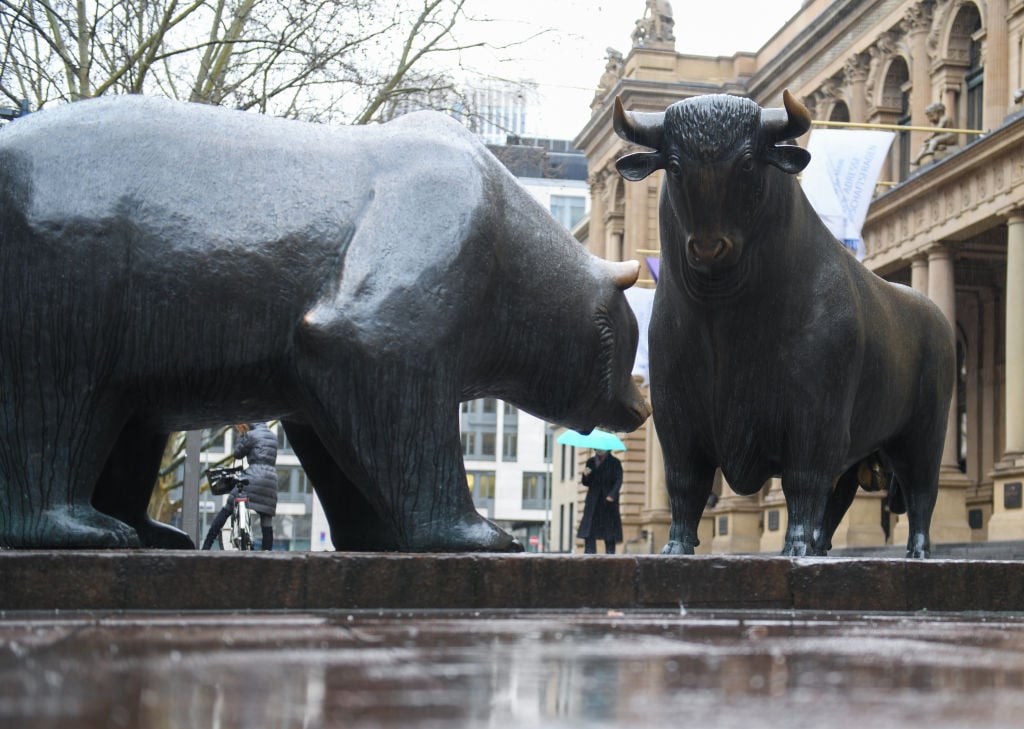Stock and bond markets reinforce each other’s weaknesses. It can be read in the weekly analysis edited by Edoardo Fusco Femiano, founder of DLD Capital SCF, according to which in the absence of a stabilization of the credit market, the rebounds of equities tend to be weak, both technically and in terms of investor participation in the movement as a whole.
The main question, albeit among many, in the minds of analysts and investors is: after the June low, should we expect further falls below that threshold? According to Edoardo Fusco Femiano, we have already received a first partial response with the index Dow Jones Transportation Average, the oldest existing stock index, which closed last week by a few dozen points below the June low. The transport sector was penalized by the Fedex quarterlywhich drastically reduced its estimates for the year, facing the largest correction for the stock in the last forty years.
The bear markets of the S&P 500 over the past sixty years

In an attempt to answer the original question, the founder of DLD Capital SCF restarts from a data analyzed in the previous weeks: the duration and extent of the bear markets of the S&P 500 over the last sixty years. The yellow remains highlighted correction of the two-year period 1980-1982the only one where the Fed raised interest rates, exactly as it has been doing up to this point.
By projecting on the S&P 500 the average extent of the correction and the single case referring to the two-year period 80-82, Edoardo Fusco Femiano identifies two key supports in the area 3.495 (-27.10%) and 3.145 (-34.47%) points. Regardless of whether these levels have actually been reached, starting from the current ones, framing the average size of a correction from a historical perspective is a mandatory exercise at this stage.

If we exclude the current correction, the report reads, the bear markets considered have had one average duration of 391 days, amounting to just over thirteen months. Considering that the current correction has continued since January 2022, that is for about 8.5 months, it makes sense to ask ourselves: how many of these bear markets have seen their absolute minimum within this time frame? In six out of ten cases. In the other four occurrences, the average duration of the correction was just under twenty-three months, for one maximum drawdown medio del 45,3%.

While the possibility remains open that the current correction can be assimilated to that of the two-year period 1980-1982, according to Edoardo Fusco Femiano it is evident that the data show a certain correlation between the time duration of a bear market and its depth in terms of price hike.
The inversion of the US Treasury yield curve
Extending the observation to other asset classes, especially in light of the evident weakness of the bond market, we cannot fail to note that 2-year Treasury rates have arrived on highs since November 2007.

In equal measure, the report reads, the inversion of the yield curve has reached levels not observed since 2000. In relation to the relationship between the inversion of the yield curve and the dynamics of the stock market, Edoardo Fusco Femiano emphasizes two aspects: first of all, history shows how the inversion of the yield curve is a indicator of undoubted effectiveness in its function of signaling stress levels on the economic cycle but, however, it is not effective as a timing tool on the equity markets. Secondly, the corrections on the stock markets can take place both in the period preceding the inversion of yields and after their return to the “natural” condition.

The supports on the main ETFs and bond indices sell off
Staying on the level of what was reported by the credit sector, we read in the report, last week saw the subsidence of significant price levels on the main bond indices and ETFs, after a period of price consolidation that began in mid-June.

TLT, the best-known ETF that invests in US Treasuries with a maturity of over 20 years, also has updated its maximum historical drawdownequal to -35.59% from the highs of July 2020.

A bullish reversal is unlikely
In conclusion, according to Edoardo Fusco Femiano, it is clear that the overall picture shows a convergence of factors that they do not indicate high probabilities of an upcoming bullish reversal. The bullish cues may come from the macroeconomic front, meaning by this a Fed meeting slightly less dovish than expected, an upcoming inflation data (Consumer Price Expenditures next 30 September) less negative than estimates and, in general, a rapid deterioration of the picture. macroeconomic.
In particular, the report reads, we must not look at the markets with the eyes of a predefined view (bullish or bearish) but take into account the overall picture from a probabilistic point of view. The context is very challenging and certainly, today more than ever, risk management is one with the asset allocation, especially the dynamic one.
